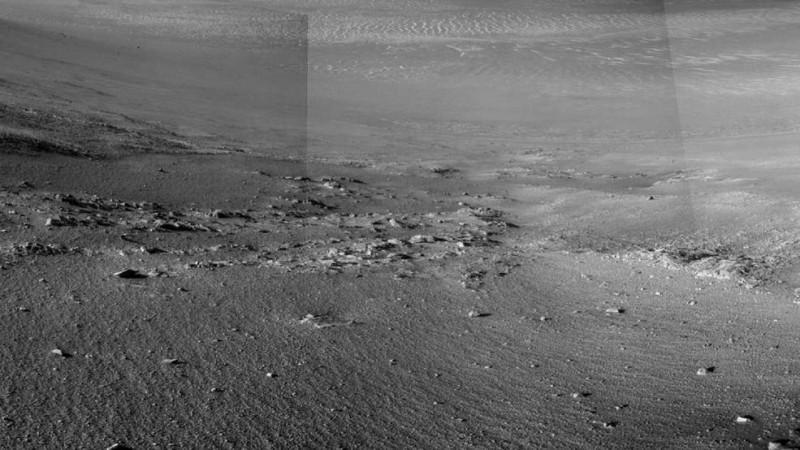
NASA's Opportunity rover, which landed on the Red Planet in 2004, recently revealed a surprise feature of Mars — rock stripes!
NASA released an image of Mars, which shows a ground texture, similar to the surface of mountain slopes on Earth, which are caused by cycles of freezing and thawing of wet soil, a NASA statement explained.
According to the space agency, these rock stripes could have formed because of the impact of water, wind, downhill transport, other processes or a combination of them.
"It's mysterious. It's exciting. I think the set of observations we'll get will enable us to understand it," said Opportunity deputy principal investigator Ray Arvidson of Washington University in St. Louis.
NASA's Mars Exploration Rover Opportunity is presently analyzing a channel called Perseverance Valley, which slopes into the inboard slope of the western rim of Endeavour Crater.
"Perseverance Valley is a special place, like having a new mission again after all these years," Arvidson said.
"We already knew it was unlike any place any Mars rover has seen before, even if we don't yet know how it formed, and now we're seeing surfaces that look like stone stripes," Arvidson said further.
The soil and gravel particles on some slopes within the valley seem to have become organized into corrugations or narrow rows which are parallel to the slope. The entire valley's origin is uncertain and the researchers from the rover team are examining numerous clues which point towards the action of water, wind or ice.
Initially, Opportunity was scheduled as a 90-sol mission as the space agency didn't expect the rover to survive the Martian winter, but the rover reached its 5,000th Martian day or sol on February 16.
Compared to an Earth day, the Martian sol is 40 minutes longer.










